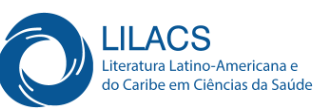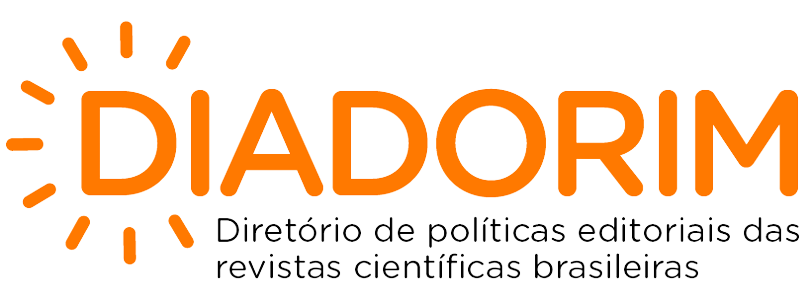Reading comprehension and morfological awareness in elementary school
DOI:
https://doi.org/10.5433/2236-6407.2019v10n2p03Keywords:
Linguistic Ability, Metalinguistic ability, Basic education, Psychoeducational evaluation.Abstract
Reading comprehension and morphological awareness are skills that contribute to the teaching and learning process. The present study aimed to investigate the reading comprehension proficiency of 70 students (2nd to 5th grades) of a public school in São Paulo and verify the differences in performance and correlations between this skill and the morphological awareness. The instruments were two Cloze tests and the Morphological Consciousness Assessment Tasks. The results indicated an increase in reading comprehension and morphological awareness, with grade level progression. In the 2nd and 3rd grade the students obtained higher scores in the derivational morphological awareness and in the 4th and 5th grade in the flexional. There were statistically significant correlations between these abilities only in the 3rd and 5th grade. It is suggested continuity in the investigations about the role of morphological awareness for the development of reading comprehension.
Downloads
References
Brasil, Conselho Nacional de Saúde. (2012). Resolução Nº 466, de 12 de dezembro de 2012. Recuperado de http://bvsms.saude.gov.br/bvs/saudelegis/cns/2013/res0466_12_12_2012.html
Brasil, Ministério da Educação (2018). Base Nacional Comum Curricular. Recuperado de http://basenacionalcomum.mec.gov.br/images/BNCC_EI_EF_110518_versaofinal_site.pdf
Coelho, C. L. G., & Correa, J. (2017). Compreensão de leitura: habilidades cognitivas e tipos de texto. Psico, 48(1), 40-49.
Cunha, V. L. O., & Capellini, S. A. (2018). Caracterização do desempenho de escolares do 3º ao 5º ano do ensino fundamental em compreensão de leitura. Revista CEFAC, 18(4), 941-951. doi: 10.1590/1982-0216201618421215
Cunha, N. de B., & Santos, A. A. A. (2019). Avaliação da consciência metatextual e sua predição da compreensão de leitura. Revista Psicologia Teoria e Prática, 21(1), 53-68. doi: 10.5935/1980-6906/psicologia.v21n1p53-68
Dancey, C. P. & Reidy, J. (2013). Estatística sem matemática para psicólogos. São Paulo: Editora Penso.
Ferraz, A. S., de Cantalice, L. M., & dos Santos, A. A. A. (2019). Motivação para aprender e compreensão de leitura em alunos do Ensino Fundamental I. Estudos Interdisciplinares em Psicologia, 10(1), 173-189. doi: 10.5433/2236-6407.2019v10n1p173
Freitas Junior, P. V. D., & Mota, M. M. P. E. D. (2015). So, Morphological Awareness Contributes to Reading in Brazilian Portuguese?. Psico-USF, 20(3), 471-480. doi: 10.1590/1413-82712015200309
Gaiolas, M. S., & Martins, M. A. (2017). Conhecimento metalinguístico e aprendizagem da leitura e da escrita. Análise Psicológica, 35(2), 117-124.doi: 10.14417/ap.1175
Gilbert, J. K., Goodwin, A. P., Compton, D. L., Kearns, D. M. (2014). Multisyllabic word reading as a moderator of morphological awareness and reading comprehension. Journal of Learning Disabilities,47(1):34-43. doi: 10.1177/0022219413509966.
Gilabert, R., Martínez, G., & Vidal-Abarca, E. (2005). Some good texts are always better: Text revision to foster inferences of readers with high and low prior background knowledge. Learning and Instruction, 15(1), 45-68. doi: 10.1016/j.learninstruc.2004.12.003
Guimarães, S. B., &Mota, M. M. P. E. D. (2016). Qual a contribuição da consciência morfológica das crianças na precisão de leitura de palavras e compreensão de texto no português?. Estudos de Psicologia (Natal), 21(3), 239-248.doi: 10.5935/1678-4669.20160023
Guimarães, S. R. K., Paula, F. V., Mota, M. M. P. E., & Barbosa, V. R. (2014). Consciência morfológica: que papel exerce no desempenho ortográfico e na compreensão de leitura?. Psicologia USP, 25(2), 201-212. doi: 10.1590/0103-6564A20133713
Hagen, V., Miranda, L. C., & da Mota, M. M. P. E. (2011). Consciência morfológica: um panorama da produção científica em línguas alfabéticas. Revista Psicologia Teoria e Prática, 12(3), 135-148.
Kintsch, W., & Rawson, K. A. (2013). Compreensão. In M. J. Snowling, & C. Hulme (Orgs.). A ciência da leitura, (pp. 227-244). Porto Alegre: Penso.
Kruk, R. S., & Bergman, K. (2013). The reciprocal relations between morphological processes and reading. Journal of Experimental Child Psychology, 114(1), 10-34. doi: 10.1016/j.jecp.2012.09.014
Laroca, M. N. C. (2005). Manual de morfologia do Português. Campinas, SP: Pontes.
Lúcio, P. S., Lima, T. H. D., Jesuíno, A. D. S. A., & Rueda, F. J. (2018). Compreensão de leitura e consciência morfológica em crianças do ensino fundamental. Estudos Interdisciplinares em Psicologia, 9(3), 112-131. doi: 10.5433/2236-6407.2018v9n3suplp112
Mota, M. M. P. E., & Brilhante, S. (2012). Tarefas de consciência morfológica. Relatório técnico não publicado. Rio de Janeiro; UERJ.
Mota, M. M. P. E., Lisboa, R., Dias, J., Gontijo, R., Paiva, N., Mansur-Lisboa, S., ... & dos Santos, A. A. A. (2009). Relação entre consciência morfológica e leitura contextual medida pelo teste de Cloze. Psicologia: Reflexão e Crítica, 22(2), 223-229. doi: 10.1590/S0102-79722009000200008
Mota, M. M. P. E. D., & Santos, A. A. A. (2014). The Cloze evaluation as a measure of reading ability in primary education. Psicologia Escolar e Educacional, 18(1), 135-142.
doi.org/10.1590/S1413-85572014000100014
Oliveira, K. L. D., Boruchovitch, E., & Santos, A. A. A. D. (2007). Compreensão de leitura em alunos de sétima e oitava séries do ensino fundamental. Psicologia Escolar e Educacional, 11(1), 41-49. doi: 10.1590/S1413-85572007000100005
Oliveira, B. S. F., & Justi, F. R. R. (2018). A contribuição da consciência morfológica para a leitura no português brasileiro. Revista Psicologia Teoria e Prática, 19(3), 270-286. doi: 10.5935/1980-6906/psicologia.v19n3p270-286
Oliveira, K. L. D., Santos, A. A. A., & Rosa, M. T. (2016). Compreensão em leitura no ensino fundamental. Psicologia: Ciência e Profissão, 36(3), 546-557. doi: 10.1590/1982-3703001172014
Mota, M. M. P. E., Guimarães, S. B., Conti, C., Linhares, T., Rezende, L. B., Amorin, S., ... & Gumier, A. B. (2013). Diferenças entre o desenvolvimento da morfologia derivacional e flexional no português brasileiro no ensino fundamental. Psicologia: Reflexão e Crítica, 26(4), 730-734. doi: 10.1590/S0102-79722013000400013
Santos, A. A. A. (2005). Evidências e validade de critério para o Teste de Cloze. (Manuscrito não publicado). Programa de Pós-graduação Stricto-Sensu em Psicologia da Universidade São Francisco: Itatiba, SP.
Santos, A. A. A., & Fernandes, E. S. D. O. (2016). Habilidade de escrita e compreensão de leitura como preditores de desempenho escolar. Psicologia Escolar e Educacional, 20(3), 465-473. doi: 10.1590/2175-3539201502031013
Santos, A. A. A., & Ferraz, A. S. (2017). Avaliação de habilidades relacionadas à compreensão de leitura no ensino fundamental. Psico, 48(1), 21-30. doi: 10.15448/1980-8623.2017.1.24376
Santos, A. A. A., Ferraz, A. S., & Rueda, F. J. M. (2018). Relações entre a Compreensão de Leitura e as Habilidades Metalinguísticas. Psicologia Escolar e Educacional, 22(2), 301-309. doi: 0.1590/2175-35392018026239
Santos, A. A. A., & Monteiro, R. M. (2016). Validade do Cloze enquanto técnica de avaliação da compreensão de leitura. Estudos Interdisciplinares em Psicologia, 7(2), 86-100.
Silva, A. A. M., & Martins-Reis, V. D. O. (2017). Influência da consciência morfológica na leitura e na escrita: uma revisão sistemática de literatura. CoDAS, 29(1), 1-8. doi: 10.1590/2317-1782/20172016032
Suehiro, A. C. B.; Santos, A. A. A. (2015). Compreensão de leitura e consciência fonológica: evidências de validade de suas medidas. Estudos de Psicologia (Campinas), 32(2), 201-211. doi: 10.1590/0103-166X2015000200005
Urbina, S. (2007). Fundamentos da testagem psicológica. Porto Alegre, RS: Artes Médicas.
Downloads
Published
How to Cite
Issue
Section
License
Copyright (c) 2019 Estudos Interdisciplinares em Psicologia

This work is licensed under a Creative Commons Attribution 4.0 International License.
The Copyright of the published manuscripts belongs to the Journal. Since they are published in an open access Journal, they are freely available, for private use or for use for educational and non-commercial purposes.
The Journal has the right to make, in the original document, changes regarding linguistic norms, orthography, and grammar, with the purpose of ensuring the standard norms of the language and the credibility of the Journal. It will, however, respect the writing style of the authors.
When necessary, conceptual changes, corrections, or suggestions will be forwarded to the authors. In such cases, the manuscript shall be subjected to a new evaluation after revision.
Responsibility for the opinions expressed in the manuscripts lies entirely with the authors.



















